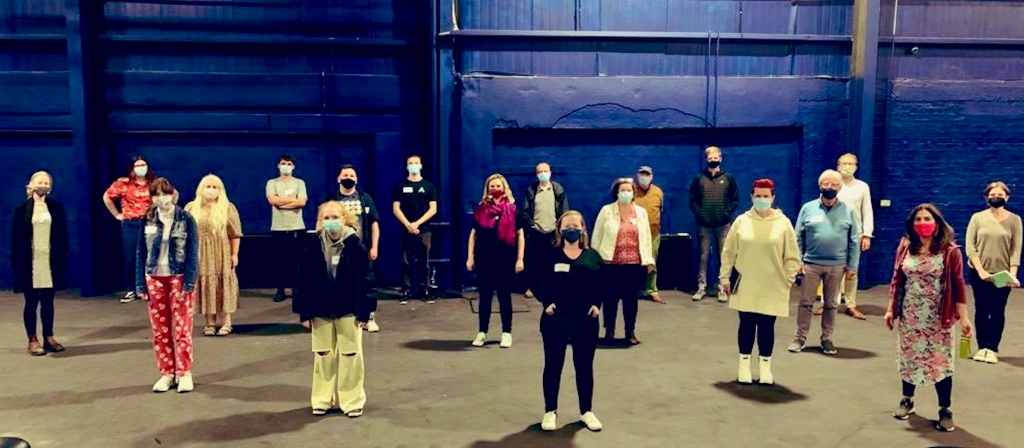This photograph of the artists working on Irish National Opera’s Out of the Ordinary project was taken on 20 August 2021, at The Complex in Dublin. It was the first opportunity for the group to work together face-to-face since the project began last year, as part of Traction. As you can see, it is not possible to distinguish between the professional and non-professional artists in the group. Differences do exist, though. They are central to participatory art and can be deeply enriching. This is the first of three blog posts that explore what this language means and why it is being used as one of the foundation stones of the Traction programme.
In working on A Restless Art, I was confronted with an unavoidable question: what defines participatory art? The obvious (but insufficient) answer is that it is what happens when artists create work with – in the words of Tom Finkelpearl – ‘citizens, regular folks, community members, or non-artists’. I’ve heard those terms used all my working life but always had reservations about them. Even so, I spoke of local people, participants or community members, for want of a better idea. But I’ve always believed – and argued – that participatory art is about the creation of art not social benefits, though they often result from the work. It is logical to regard people involved in the creation of art as artists, just as people who are cooking are cooks. It is the activity that is significant. As an act in the world, it has consequences. The quality of that act, which might or might not affect its consequences, is a separate matter. I am not a good cook. I’d struggle to keep a job in a café with a freezer and a microwave. But as long as I did, I would be a cook.
However, the argument that everyone involved in a participatory art project is an artist presents an obvious difficulty: it is also true of every other art project. And yet, most people accept that participatory art is different from other forms of creation, which is why it is given a distinguishing label. So, what is the difference?
It is clear, to me at least, that while everybody involved in a participatory art project is an artist, they are not artisting in the same way. (I invented that verb in Winter Fires, because the actual word for what artists do – to create – has been appropriated by so many other fields as to lose much of its usefulness in thinking about art practice.) There is a difference, and an important one, between people who invest much of their time and energy in creating art, and others for whom the act might be occasional, literally connected to a life event. The difference has to do with the resources that each brings to the creative act, but also to their purpose in undertaking it. The difference also affects their identity, how they see themselves and are seen by others.
The group who have come together to work with Irish National Opera on a community opera in VR is a good example of those differences, and how they can produce creative possibilities that do not exist when professional or non-professional artists work only with their peers.
Tomorrow, I will outline what I think professional artists bring to the equation, while the third post will look at the contribution of non-professionals artists.


3 responses to “The difference between a professional and a non-professional artist – Part 1”
Looking forward to this Francois – I particularly like the cooking metaphor
LikeLike
as I travel to spend a weekend with members of the Berlin Steigreif Orchestra and community participants in Dortmund on a set of workshops reworking Beethoven 9 this is an interesting read. We will perform the piece in 4 weeks with approx 90 players and singers (professional and non-professional) and over this weekend I’ll think more carefully about what each person will bring to the show. Listening to the symphony as I travel on the train from the UK I am wondering how we will achieve the beauty, the awe, the grandeur, the depth and the ‘symphony’ of the original. Maybe I’ll be able to add a comment to your blog next week !
LikeLiked by 1 person
[…] Lots of material to think with in a great series of blogs from Francois Matarasso on the differences between professional and non-professional artists […]
LikeLike